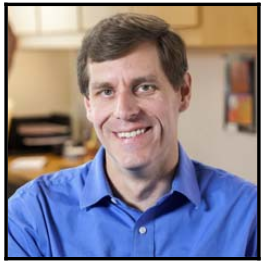 Speaker: Prof. Mark C. Hersam
Speaker: Prof. Mark C. Hersam
Abstract Details: Two-dimensional materials have emerged as promising candidates for next-generation electronic and optoelectronic applications. As is common for new materials, much of the early work has focused on measuring and optimizing intrinsic properties on small samples (e.g., micromechanically exfoliated flakes) under idealized conditions (e.g., vacuum and/or cryogenic temperature environments). However, real-world devices and systems inevitably require large-area samples that are integrated with dielectrics, contacts, and other semiconductors at standard temperature and pressure conditions. These requirements are particularly challenging to realize for two-dimensional materials since their properties are highly sensitive to surface chemistry, defects, and the surrounding environment. This talk will thus explore methods for improving the uniformity of solution-processed two-dimensional materials with an eye toward realizing scalable processing of large-area thin-films. For example, density gradient ultracentrifugation allows the solution-based isolation of transition metal dichalcogenides (e.g., MoS2, WS2, MoSe2, and WSe2) and boron nitride with homogeneous thickness down to the single-layer level. Similarly, two-dimensional black phosphorus is isolated in solution with the resulting flakes showing field-effect transistor mobilities and on/off ratios that are comparable to micromechanically exfoliated flakes. In addition to solution processing, this talk will also report on the integration of two-dimensional materials with dielectrics and other semiconductors. In particular, atomic layer deposition of dielectrics on two-dimensional black phosphorus suppresses ambient degradation, thereby preserving electronic properties in field-effect transistors at atmospheric pressure conditions. Finally, gate-tunable p-n heterojunction diodes with Type I and Type II band alignments are demonstrated by integrating n-type single-layer MoS2 with p-type semiconducting single-walled carbon nanotubes and pentacene, respectively.
About the Speaker: Professional Biography of Mark C. Hersam
Materials Science and Engineering, Northwestern University
2220 Campus Drive, Evanston, IL 60208-3108 USA
Tel: 847-491-2696; Fax: 847-491-7820
E-mail: m-hersam@northwestern.edu
WWW: http://www.hersam-group.northwestern.edu/
Mark C. Hersam is the Walter P. Murphy Professor of Materials Science and Engineering and Director of the Materials Research Center at Northwestern University. He also holds faculty appointments in the Departments of Chemistry, Applied Physics, Medicine, and Electrical Engineering and Computer Science. He earned a B.S. in Electrical Engineering from the University of Illinois at Urbana-Champaign (UIUC) in 1996, M.Phil. in Physics from the University of Cambridge in 1997, and a Ph.D. in Electrical Engineering from UIUC in 2000. His research interests include nanofabrication, scanning probe microscopy, semiconductor surfaces, and nanoelectronic materials. As a faculty member, Dr. Hersam has received several awards including the NSF CAREER Award, Beckman Young Investigator Award, ARO Young Investigator Award, ONR Young Investigator Award, Sloan Research Fellowship, Presidential Early Career Award for Scientists and Engineers, TMS Robert Lansing Hardy Award, AVS Peter Mark Award, MRS Outstanding Young Investigator Award, MacArthur Fellowship, and six Teacher of the Year Awards. Dr. Hersam is the co-founder of NanoIntegris, which is a commercial supplier of high performance nanoelectronic materials. Dr. Hersam is a Fellow of MRS, AVS, APS, AAAS, SPIE, and IEEE, and also serves as an Associate Editor of ACS Nano. Dr. Hersam is currently serving as a 2016 U.S. Science Envoy to help inform the White House, the Department of State, and the scientific community about potential opportunities for international scientific cooperation.
Click HERE for directions
—
To view all the upcoming seminars, you can visit: https://graphene.nus.edu.sg/news-events/events/
You may also Like & Subscribe our following channels below to receive instant notifications for new announcements.






 Speaker: Prof. Mark C. Hersam
Speaker: Prof. Mark C. Hersam